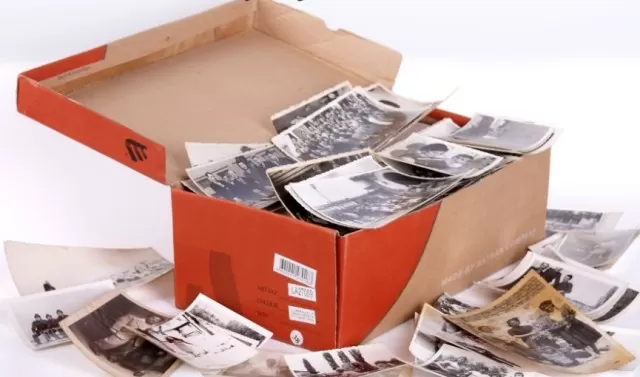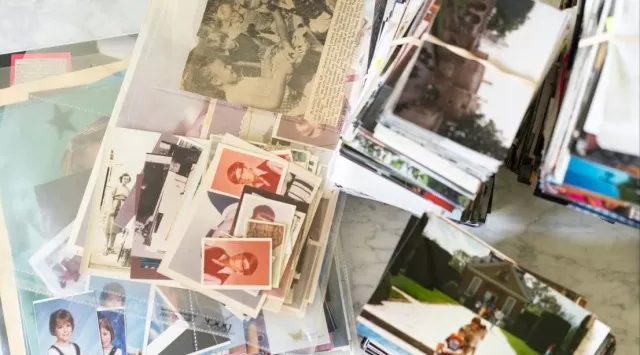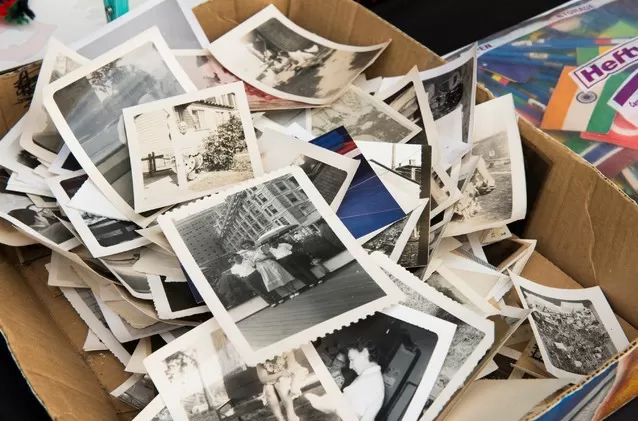Capturing memories through photography has become incredibly convenient because afterward, you can have printed photos.
The ease of snapping a photo at any moment has led to the accumulation of thousands of pictures in our camera rolls.
However, deciding how to manage this abundance of photos can be a daunting task. To assist you in organizing your photos, whether they are in digital or printed form, we have compiled a set of valuable tips.
These suggestions will guide you in sorting digital photos from your phone or camera onto your computer and provide you with methods to securely store printed photos. By following these tips, you can declutter your camera roll, safeguard your family photographs, and ensure the preservation of your cherished memories.
Tips for Organizing and Protecting Printed Photos

Organizing Printed Photos:
To effectively organize your printed photos, follow these steps:
Invest in Matching Photo Albums and Boxes:
Start by acquiring a set of photo albums and photo boxes that match in size and design.
This will make it easier to create a consistent organization system for your photos over the years.
Sort and Identify Photos:
As you receive new photos, go through them and sort them accordingly.
While doing so, record important information on the back of each photo, such as the date or the people featured in the image. Use an acid-free, photo-safe pencil or pen to ensure that the writing does not damage the photo.
Lightly write the details to avoid pressing too hard.
Discard Unwanted Photos:
Avoid keeping photos with bad exposures, blurry shots, or images that hold no sentimental value.
Dispose of or recycle any photos that you’d rather not remember. Select your favorite photos to put in albums or frames immediately, and consider sharing some images with friends and family.
Create a List for Reprints or Enlargements:
Make a list of any photos you want to reprint or enlarge.
Take this list with you to the photo store on your next outing, making it easier to address your printing needs.

Storing Printed Photos:
Consider the following methods to store your printed photos:
Photo Boxes and Envelopes:
Utilize specially designed photo boxes to create a filing system for your prints.
Transfer the photos from the packets received from the photo center to acid-free envelopes, which are less bulky. Clearly label each envelope with dates and relevant descriptions (e.g., “Yellowstone Vacation 2019” or “Christmas 2019”).
Categorize and organize the envelopes accordingly.
Tabbed Dividers:
Use tabbed dividers to further organize your photos into subcategories.
You can label the dividers by year or family member, or any other relevant criteria that will help you find specific photos easily.
Albums or Binders:
Consider using albums or binders with acid-free plastic sleeves.
Leave a blank pocket in front of each new set of photos to identify different categories. Slip labeling cards into the pockets to provide context for the moments captured in the photos, such as honeymoon memories or special events.
Acid-Free Storage Solutions:
Line a drawer in a desk, bureau, or flat file cabinet with acid-free tissue paper or cardboard.
Place the envelopes of photos and negatives in the drawer, treating them as a photo box. Alternatively, you can use a chest as a convenient storage unit for your printed photos.

Protecting Printed Photos:
To protect your printed photos and film negatives, consider the following measures:
Sunlight and Temperature:
Keep your stored photos and albums away from direct sunlight in a cool, dry area.
Avoid hanging framed photos in places exposed to direct sunlight, as it can cause fading. Basements and attics should be avoided due to temperature and humidity fluctuations.
Handle with Care:
When handling photos and negatives, touch them only by the edges to prevent oils from your fingers from degrading the images.
Wearing clean white cotton gloves provides an extra layer of protection. Avoid using paper clips, rubber bands, glue, or tape that are not specifically designed to be photo-safe.
These materials can damage the photos or interact chemically with them over time.
Choose Acid-Free Materials:
Opt for acid-free plastic pages, bags, and boxes to store your photos.
Some safe plastic materials include polypropylene, polyethylene, mylar, Tyvek, and cellulose triacetate. Check the labels on photo boxes, mats, and albums to ensure they are acid-free and photo-safe.
When framing photos, use acid-free matting materials to protect them.
By following these tips, you can efficiently organize, store, and protect your printed photos, ensuring their longevity and enjoyment for years to come.
*The information is for reference only.